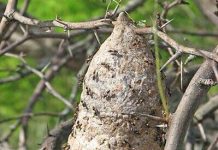Family: Caesalpiniaceae
Synonym:Bauhinia chinensis (DC.) Vogel
Bengali/Vernacular name: Rakta kanchon, Lal-kanchon, Vaga-kanchon.
Tribal name: Wa-kaw-pa (Murang), Sang-ra-bawn (Rakhaing).
English name: Mountain ebony, Camel’s foot, Red flowered bauhinia, Variegated bauhinia.
Description of the plant: A medium-sized deciduous tree. Leaves simple, alternate, petiolate, lamina 5-16 cm long, as broad as long, with a medium cleft reaching one third, lobes obtuse, base deeply heart-shaped. Inflorescence terminal or axillary, few-flowered, pubescent raceme; flowers large showy, purple, pink. Fruit a pod, oblong, flat, slightly curved.
Plant parts used: Bud, bark, root.
Herbal uses:Juice extracted from the bark of the plant is used for the treatment of seminal emission.
Bark is used for the treatment of skin diseases, scrofula, and ulcers.
A paste made with the bark of the plant is applied to the infected skin twice a day until the leprosy is cured.
Decoction of the root is used to treat dyspepsia.
Paste prepared from the bark of the plant is applied to treat leucoderma.
Extract prepared from the stem bark of the plant is used for the treatment of glandular inflammation.
The dried buds are used in the treatment of piles, dysentery, diarrhoea, and worms.
A paste made with the roots of the plant is applied to the snakebite place by tightly tying with a piece of cloth to treat it.
The plant is used to treat diabetes, inflammation, tumours, menorrhagia, hemoptysis, and cervical lymphadenopathy.
Distribution: The species is found all over the country.
Is this plant misidentified? If yes, please tell us….















… [Trackback]
[…] Find More here to that Topic: natureinfo.com.bd/bauhinia-variegata-l/ […]
… [Trackback]
[…] Find More on on that Topic: natureinfo.com.bd/bauhinia-variegata-l/ […]